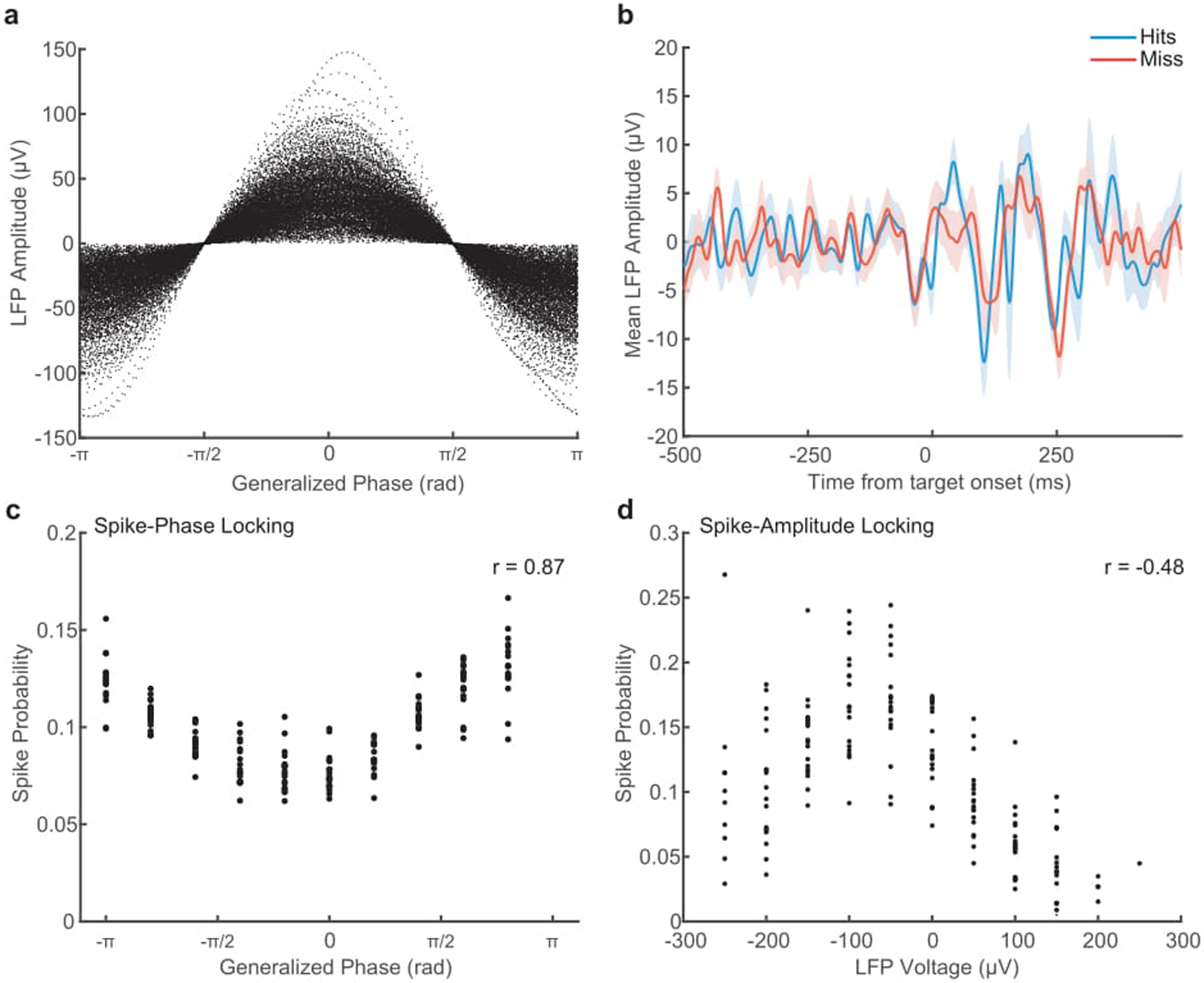Extended Data 9. Instantaneous voltage is less predictive of spike timing and perception than Generalized Phase.

(a) Scatter plot showing the relationship between instantaneous LFP amplitude in voltage, and GP. The same voltage value can occur across a broad range of phases. (b) While we find wave phase to be predictive of detection, the average LFP voltage is not different preceding a hit (blue) or a miss (red). Shaded area indicates SEM across 18 sessions in monkey T. (c) Scatter plot showing the coupling of spike probability to GP. Each point is the probability of a spike occurring in that phase bin within a recording session (N = 18). There is a strong circular-linear correlation of GP with spike probability (r = 0.87). (d) Scatter plot showing weaker spike-amplitude coupling. Each point is the relative probability of a spike occurring in each voltage bin, normalized by the amount of time that instantaneous voltage occurs. Spike probability is less correlated with LFP amplitude (Spearman’s rank correlation, r = −0.48).
